When it comes to Commander, it’s rare to see a general that inspires many different builds. In the past I have discussed legendary creatures as they are being previewed or that I uncovered that define an archetype for my playstyle. And in my analysis of the Faceless Menace deck, I thought that Volrath, the Shapestealer was going to take a similar route; something that captured my attention, something that I would find an exciting interpretation of when I sat down to write an article.
Instead, my well-laid plans began to splinter off into different archetypes—all using Volrath at the helm—to the extent that I developed three distinct ideas that will be covered over the coming weeks. Today, we will be looking at how Volrath, the Shapestealer can be used as a Clone tribal deck. Next week will cover a more Voltron build, and the week after will focus more on the lore of the character.
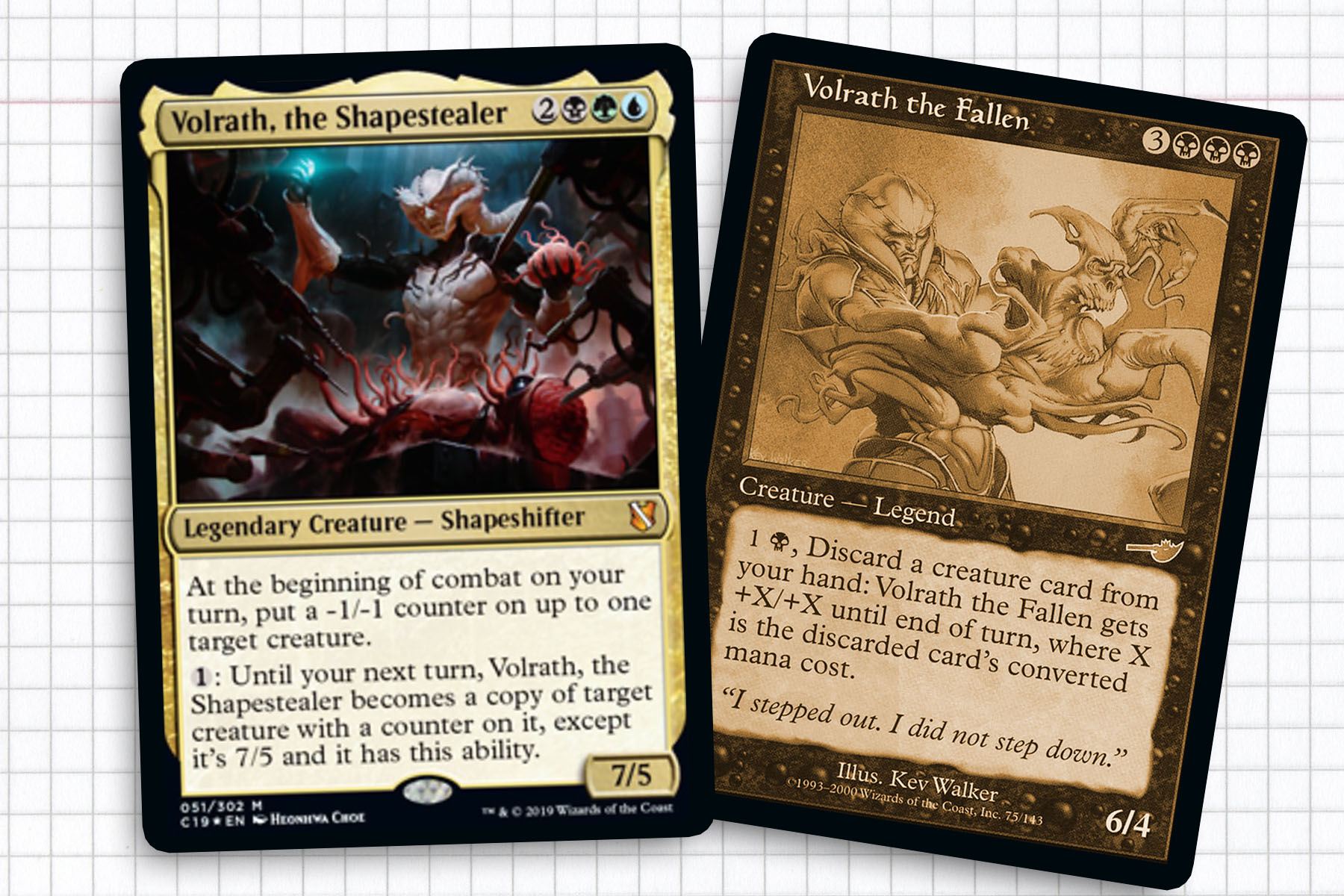
A Brief History: Volrath
For those unfamiliar with mid-90’s Magic lore: the man that would become Volrath was born Vuel, the son of Sidar Kondo from the continent of Jamuraa, where Mirage and Visions took place. From an early age, Gerrard Capashen joined the Kondo family. Vuel was at first antagonistic toward him, then friendly, and eventually resentful. Vuel came to be exiled from his homeland; but due to his lust for power, he eventually found his way to the artificial plane of Rath, where he became an apostle of Yawgmoth, god of Phyrexia.
This lead to Vuel become Volrath, the new Evincar of Rath and one of the main antagonists of that period of Magic story leading into Invasion block. He experimented on slivers, made plans to use flowstone to overlay Rath onto Dominaria, and ultimately died at the hands of Ertai, the Corrupted. But when Belzenlok rose to power some time after Time Spiral block, he rewrote Dominaria’s history, claiming that he had been Evincar instead of Volrath. So who really knows what’s true?
Overall, I think the new version of Volrath we got in Volrath, the Shapestealer is a much clearer representation of the character than Volrath the Fallen ever was, especially when you examine him over the course of his entire narrative. He has a link to Phyrexia through his use of -1/-1 counters and he can mimic others while retaining his natural base stats. He leads you in a direction as a general, but his open-ended design allows for him to be used in different ways—such as this week’s theme, Clones.
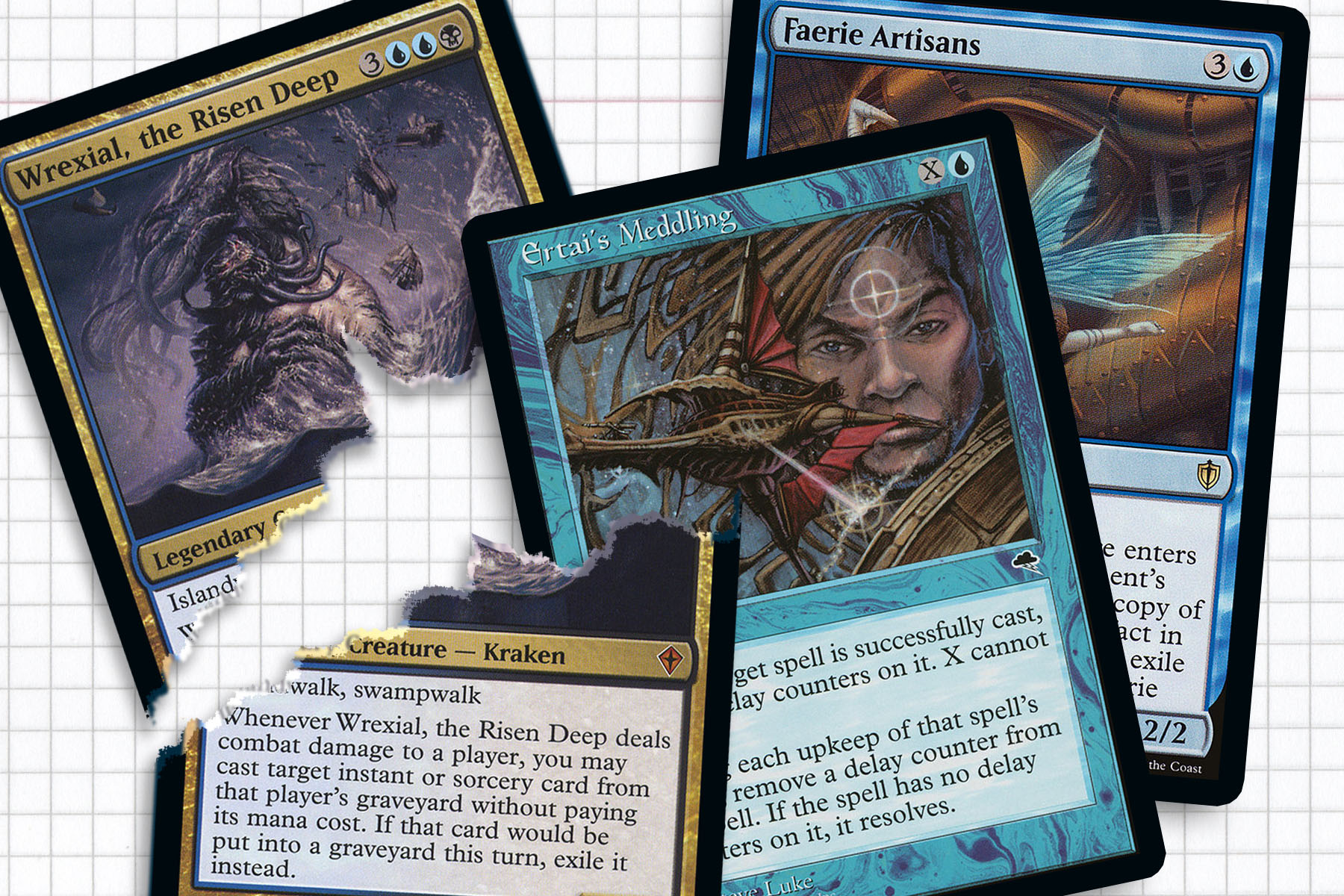
Volrath Has No Way to Win
Finding this version of the deck wasn’t easy, but began as I looked for a way to make Clone tribal work without being a blatant rip-off of Lazav, Dimir Mastermind or Lazav, the Multifarious decks. Once I had drawn an outline of counter-adding cards, I quickly realized my desired decklist was going to instead take cues from Wrexial, the Risen Deep—a great throwback to “Wrexial Has no way to win.”
This Wrexial deck has its roots going all the way to the first episode of the long-running Commander Cast in 2011, where then-host Andy looked to build a Wrexial deck with a rather modest budget. It was then taken by a listener and turned into an aikido-playstyle deck, using the resources of those around the table to ultimately beat players with their own tricks while covertly being a deck whose power level scaled with the rest of the table.
For my refacing of the deck, I wanted to retain the causal elements present in the original. Cards like Commandeer and Dominate are spells that can permanently acquire other players’ stuff. By using soft counter-magic like Ertai’s Meddling, Memory Lapse, and Remand, we minimize the feeling that players are being completely shut out of the game.
While we’re here, I also wanted to take the chance to upgrade cards like Clone and Cryptoplasm for some new hotness like Faerie Artisans and Spark Double. What I’ve ended up with is a reasonable deck that takes strong notes from “Wrexial Has No Way to Win,” adds green, and plays to the strengths of Volrath. Volrath here is the leader of a deck of Clones; and by extension, the last-ditch option when playing against a table that left me with few other ways to string together creative wins.
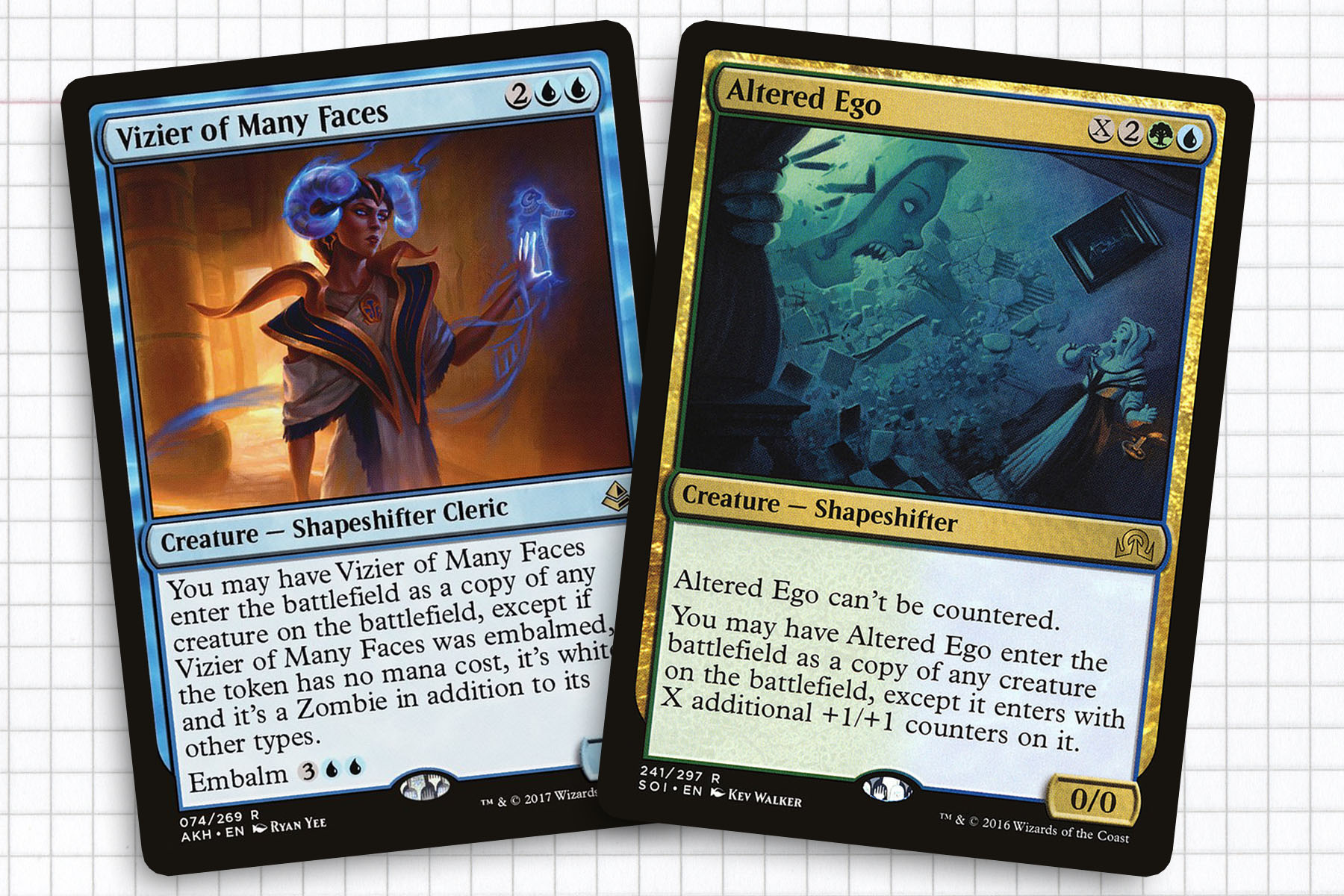
His Name is My Name Too
To the casual observer, one of the most exciting parts about this deck is that it is absolutely packed with copying effects. I’ve had a history with the archetype, dating as far back as 2012 when I built a Blue/Black casual 60-card deck to play at the kitchen table of my friend’s apartment. The deck as it stood at that time was full of cards like Clone, Copy Enchantment, and Sculpting Steel to blend into any game and be as powerful as the decks I was playing against. It pressed me to think through future turns carefully, as the late game brought wider and wider possibilities. I loved playing it.
Whether through that deck or my history playing as a Doppelganger in D&D, I’ve always had an affection for Clones. The discovery of this aikido archetype interested me right off the hop, even if the versions I built for Commander never stuck around as long as I would have liked. With the minor number of exceptions, the creatures in this deck are included because they can be a copy of something else in play.
Clones: Altered Ego, Body Double, Clever Impersonator, Evil Twin, Faerie Artisans, Phyrexian Metamorph, Progenitor Mimic, Rite of Replication, Shapesharer, Spark Double, Vesuvan Doppelganger, Vesuvan Shapeshifter, Vizier of Many Faces
A powerful thing about Clone effects is that they can be rather unassuming, yet holding one in your hand has massive potential. Two of the best creatures in this mold are Phyrexian Metamorph and Clever Impersonator, because they can go outside of simply being creatures to become artifacts, enchantments, and planeswalkers. With the addition of green comes the chance to use Altered Ego and Progenitor Mimic, though unfortunately Spitting Image didn’t make the cut this week.
I also feel it’s important to point out that when it comes to these effects, you’ll value versions that come with a casting cost of four, so they can be targets for Clutch of the Undercity’s transmute ability.
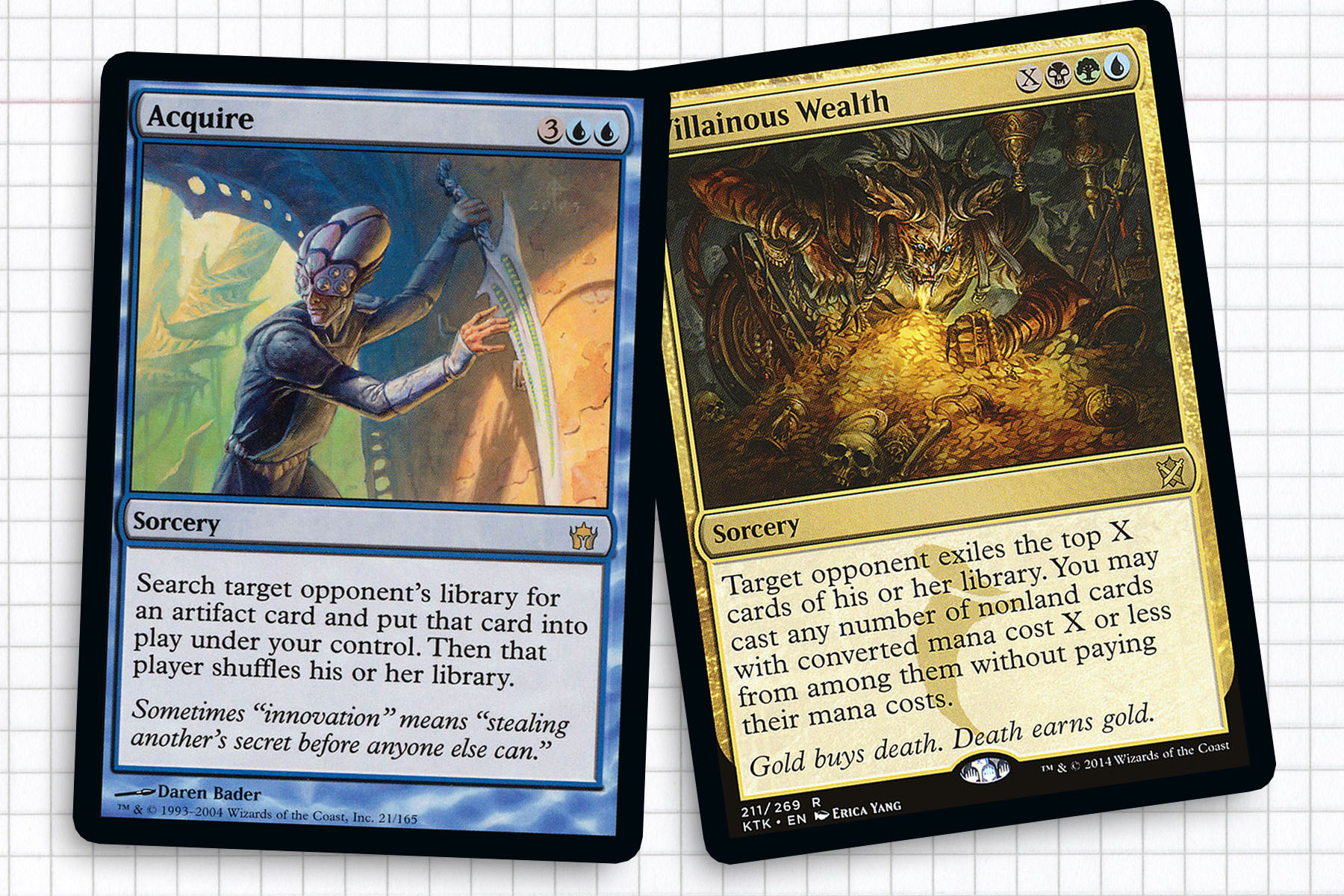
Using Their Tricks First
Magic isn’t a game that allows you to dig through your opponent’s deck to take resources for your own use much anymore. Our source deck did just that, taking overlooked cards and giving them purpose. This angle of the deck makes a bit more sense in the context of Wrexial, the Risen Deep: having him in the command zone means that you have access to flashing back other players’ spells when you connect with combat damage. Still, this was an attribute I admired and continued in my brew.
Using Their Stuff: Acquire, Bribery, Knowledge Exploitation, Thada Adel, Acquisitor, Villainous Wealth
While a small suite of cards, I like the idea of a deck being so open-ended that it requires you to dig through other libraries for answers instead of your own. I’ve always liked Villainous Wealth; the ability to make use of it here means that not only will we be copying our opponent’s stuff, but we can also have the originals outright for the remainder of the game. And of course, there’s the high-profile Bribery, a semi-staple in many blue decks since the founding of Commander, that has a thematic role to play here.
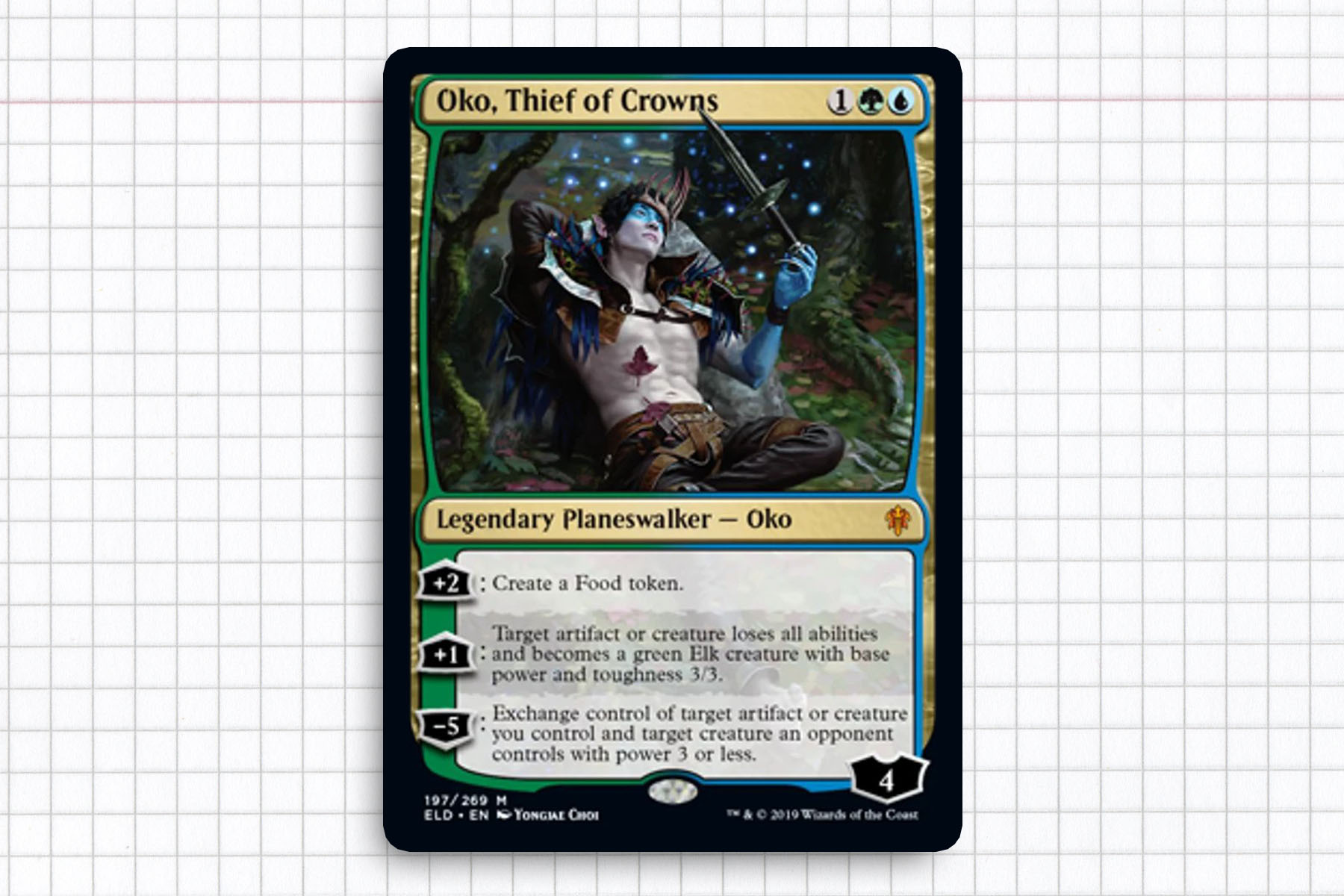
While not exactly the same, this is also the category where I might include our new planeswalker, Oko, Thief of Crowns. Their final ability means that we will be swapping our less-valuable artifact or creature for one from an opponent. I can say that in a different color identity, Aminatou, the Fateshifter would love this card, but I suspect he might be valuable here as well. Only time will tell if Oko has the right stuff for this deck.
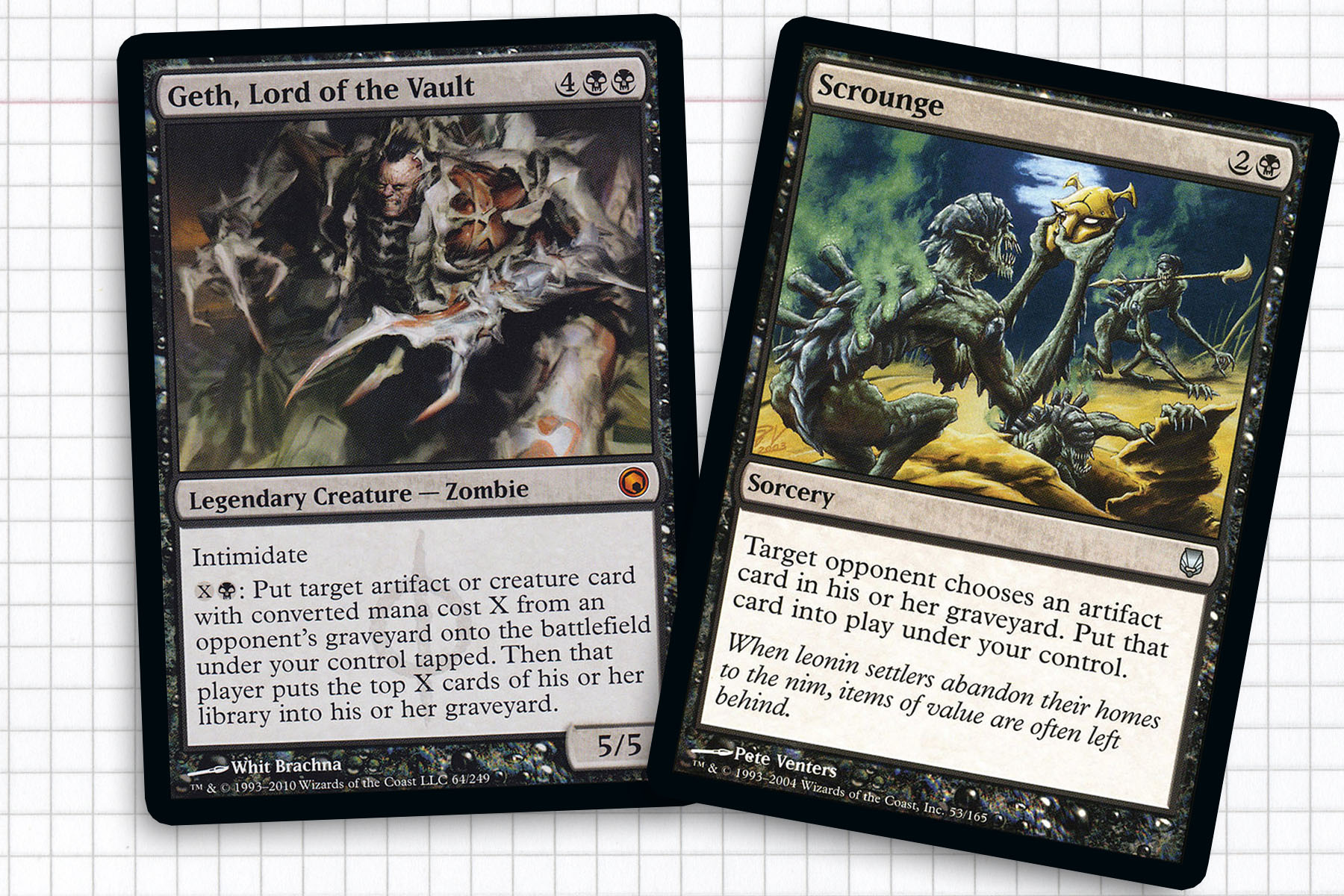
Reuse and Recycle
In the Wrexial deck, there is a substantial milling theme that played into his saboteur ability. Since Volrath doesn’t have any interaction with the graveyard and we’re adding a third color, explicit milling has been removed. Regardless, cards that exploit creatures and spells in graveyards are rather novel. In keeping with the spirit of the original deck, I still wanted the option to play with cards that had naturally reached my opponents’ graveyards over the course of the game.
Recycling the Dead: Body Double, Dimir Doppelganger, Geth, Lord of the Vault, Ghastly Conscription, Memory Plunder, Scrounge
One interaction that I found playing the Commander 2019 decks out of the box was how well Geth, Lord of the Vault and Ghastly Conscription play off of each other. Obviously, with Geth you can make surgical selections with what you’re reanimating, but even if you’re just recurring a Sakura-Tribe Elder repeatedly, the graveyard is conveniently filling up for a profitable Conscription. Dimir Doppelganger is often best played as an unofficial six drop because it protects itself very poorly as a 0/2. The Doppelganger’s ability to constantly shift into new forms can become a one-card combo late in the game, especially if there is another graveyard deck at the table.
One thing I didn’t cover this week was how we could super-charge Volrath’s ability to allow him to take the form of whatever creature we want when the moment calls for his intervention. In this deck, I feel that he prrovides a last option for closing out a game when we can’t stitch something else together. I have baked in a few ways to allow us to bolster our own creatures, though, in Bloodspore Thrinax, Generous Patron, Lead by Example, and The Crowd Goes Wild. While minimal, this suite will also serve as the basis for future decks, with more cards fitting in depending on the needs of those decks. It should be fairly obvious what utility they have here, but expect that I will be returning to this theme next week, as it will play a little more into what we’ll be doing then.
Ryan Sainio is a Graphic Designer who writes about EDH and the EDH community. He has been playing Magic: The Gathering since 7th Edition in 2002 and values flavorful and fun gameplay over competitively optimized decks.

